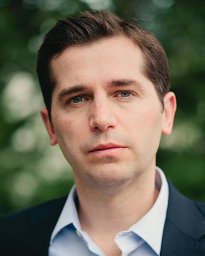Symposia
Technology
3 - (SYM 133) Sleep and Circadian Rhythm Disturbances as Proximal Risk Factors for Suicidal Thoughts and Behaviors: Results from a Real-time Monitoring Study of Adults and Adolescents
- KZ
Kelly Zuromski, Ph.D. (she/her/hers)
Research Associate
Harvard University
Cambridge, Massachusetts - AM
Alexander Millner, Ph.D.
Research Associate
Harvard University
Cambridge, Massachusetts - RF
Rebecca Fortgang, Ph.D.
Postdoctoral Fellow
Harvard University
Cambridge, Massachusetts - KB
Kate H. Bentley, Ph.D. (she/her/hers)
Clinical Psychologist
Massachusetts General Hospital
Boston, Massachusetts - AB
Adam Bear, Ph.D.
Machine Learning Engineer
Harvard University
Cambridge, Massachusetts - DD
Dylan DeMarco, B.A.
Student
Department of Psychology, Harvard University
Cambridge, Massachusetts - RB
Ralph Buonopane, Ph.D.
Director, McLean-Franciscan Child & Adolescent Inpatient Mental Health Program
Fransciscan Children
Brighton, Massachusetts 
Evan Kleiman, Ph.D. (he/him/his)
Assistant Professor
Rutgers University
Piscataway, New Jersey
Matthew K. Nock, Ph.D. (he/him/his)
Research Scientist
Harvard University
Cambridge, Massachusetts
Speaker(s)
Co-author(s)
Background: Despite decades of research, suicide remains a leading cause of death in the U.S. To better predict and prevent suicidal thoughts and behaviors (STBs), identification of proximal, transdiagnostic risk factors that would serve as viable treatment targets is critically needed. In this study, we examined the association between two putative risk factors for STBs—sleep disturbances and circadian rhythm disruption—using multimodal data (i.e., accelerometer data collected via wearable biosensor, smartphone-collected GPS data, and ecological momentary assessment [EMA] surveys) from an intensive longitudinal study of suicidal adults and adolescents.
Methods: Adolescents (n = 320) and adults (n = 320) who recently experienced a suicide attempt or high levels of suicidal intent were recruited from an inpatient psychiatric unit or emergency room. Participants wore a biosensor (either an Empatica Embrace or Fitbit Charge 5) for six months post-discharge and had an app installed on their phones that monitored their GPS movement. They also completed smartphone EMA surveys 6x/day for the first three months post-discharge, then 1x/day for the next three months. EMA survey items assessed for STBs, sleep quality, and other psychological covariates.
Results: Data collection recently concluded. Preprocessing of app-collected phone data and wearable sensor data (~300 GB) is underway and analysis of passive data will follow examining the day-to-day temporal dynamics between STBs, sleep (e.g., sleep and wake times), and circadian rhythm variables (e.g., sleep regularity, inter-daily stability of activity). However, preliminary fixed-effects regression analyses on the EMA data indicate that prior night’s sleep quality was negatively associated with next day suicidal intent (i.e., worse sleep predicted worse suicidal intent; b = .026, p < .001).
Conclusions: To our knowledge, this will be the most extensive examination to date of the time-lagged associations between sleep, circadian rhythmicity, and STBs: (a) using wearable biosensor and smartphone data, (b) during a critical high-risk period (i.e., post hospitalization), and (c) within both adult and adolescent samples. Using real-time monitoring data, this project will allow us to examine putative risk factors for STBs in a way not previously possible. Further, this study will allow us to examine the predictive accuracy of passive sensors (vs self-report surveys) to detect suicide risk, as well as explore the feasibility of using these methods in an acute, high-risk sample.

